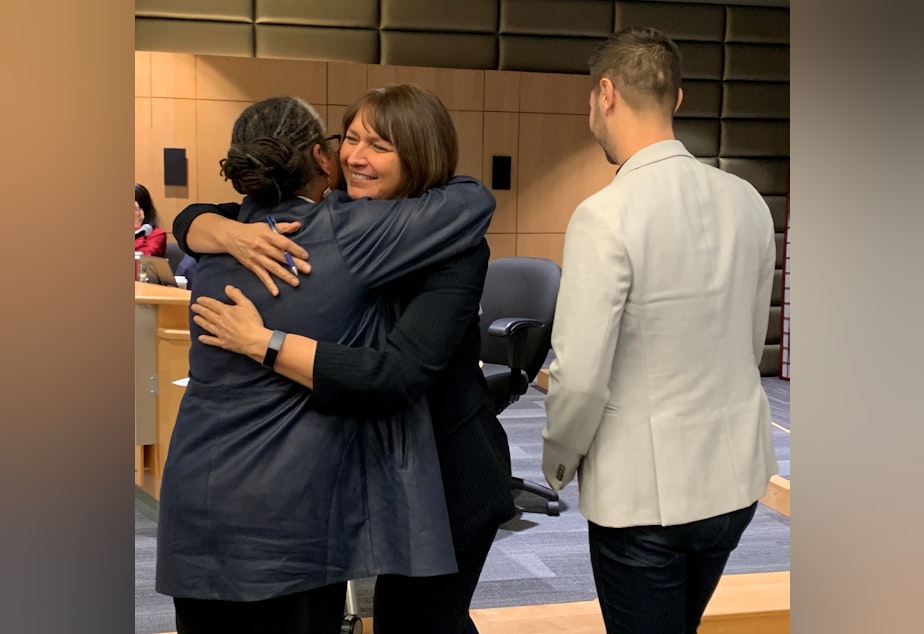Washington Middle School to be turned into STEM school; 'highly capable' classes will go

Washington Middle School is slated to be transformed into a STEM-focused program by fall 2020. But the district must face the fallout of eliminating its self-contained “gifted” cohort.
Since it was first made public in 2019, the prospect of a neighborhood STEM school coming to the Seattle Public Schools district has sparked heated discourse among parents, students, and educators. Some have lauded the effort as a step in the right direction toward closing opportunity gaps. Others say the change will put certain students at a disadvantage.
The Seattle School Board voted on Wednesday in favor of co-operating a STEM-focused secondary school with the nonprofit Technology Access Foundation at what is presently the Washington Middle School campus. Wrapped into the vote is the stipulation that the school must phase out its highly capable cohort, or HCC, an advanced learning model in which students who would traditionally be considered “gifted” are instructed in self-contained classrooms.
However, an amendment that would have guaranteed students currently placed in Washington's highly capable cohort classes at one of four other middle schools in the district that offer the program failed.
The debate over bringing the new STEM school, called TAF Academy, seemingly came to a head when district officials recommended phasing the highly capable cohort out of Seattle Public Schools’ advanced learning services altogether — not just at Washington. While state law does compel school districts to offer highly capable services, they aren't required to be offered within a cohort.
The proposal was presented as a step toward aligning the district's practices with its racial equity-focused strategic plan, which centers the achievement of African-American male students in particular.
Sponsored
The past year has seen much conversation regarding disparities in the representation of Black and White students especially within Washington Middle School's highly capable cohort. About 84% of White students participate; 9% of Black students are in those classrooms, according to school data from 2018.
Public comment at Wednesday night's meeting became heated, with several opponents of TAF Academy testifying beyond the two minutes allotted to each speaker. School board president Zachary DeWolf at one point called a five minute recess in an attempt to deescalate the tension.
Cliff Meyer, a parent at Washington, spoke to the angst surrounding the vote, stating that "the district's racist approach to highly capable education has been on display in its worst possible way" at the school. But Meyer, along with several other parents who took the podium, implored the district to keep serving students who perform at an advanced level a priority.
Seattle Public Schools entered a memorandum of understanding with Technology Access Foundation in May 2019. Since 2008, Technology Access Foundation has co-managed a project-based STEM school with the Federal Way Public Schools district, now called TAF @ Saghalie. The organization operates several other programs in South King County and boasts a 95% graduation rate for students participating in its curriculum.
"This is a partnership to bring a curricular-focused STEM in partnership with the industry leader in this work that shares our values," said Sherri Kokx, a senior advisor to district Superintendent Denise Juneau. "We are not dismantling HCC services. I believe we're bolstering them."
Sponsored
Washington Middle School, located in the Central District neighborhood, was ultimately chosen due to its proximity to Seattle Central College and various community-based organizations, according to school board director Leslie Harris.
It is uncertain where highly capable students whose families opt for them to leave the school might find placement.




